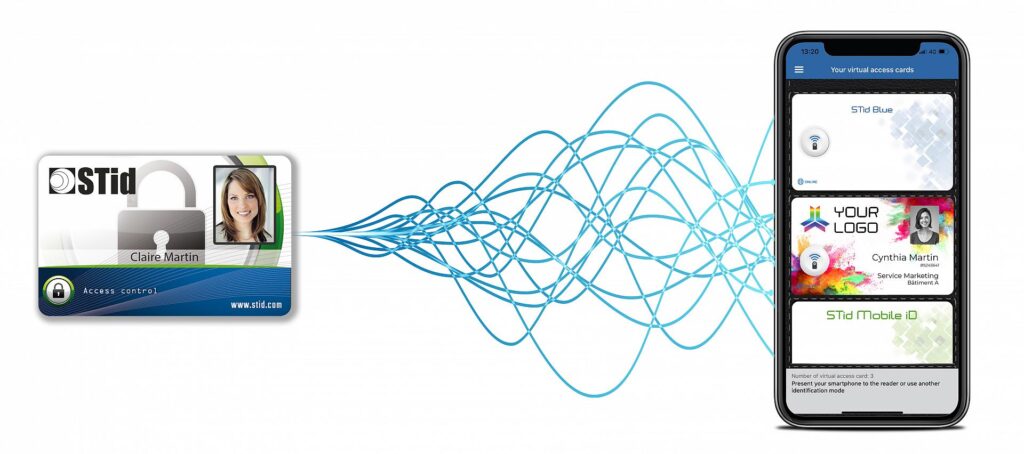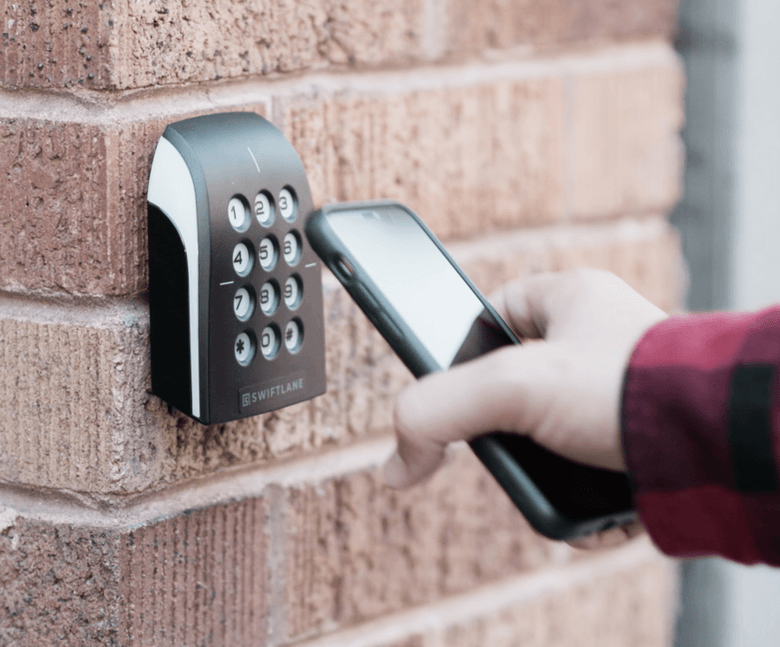Mobile Access Control: Exploring the Significance of Bluetooth Technology

Choosing the Right Communications Protocol for Smartphone Access Control Trends
The use of smartphones in access control systems is rapidly gaining popularity as electronic access control manufacturers promote the various ways in which mobile technology and soft or virtual credentials can be used to replace cards. With the majority of the population owning smartphones, it’s no surprise that many organizations are adopting this new technology. According to Gartner Research, 95% of adults aged 18-44 own smartphones, and 20% of organizations are predicted to use mobile credentials for physical access by 2020.
Smartphones have all three authentication parameters, making them a reliable solution for access control. With the use of biometrics and personal identification numbers (PINs), mobile credentials remain protected behind the smartphone’s security parameters, providing a built-in multi-factor verification system. Since the credential is protected by the phone’s security system, it cannot be accessed without access to the phone. Therefore, organizations are keen to implement smartphone-based access control systems due to their built-in security and availability.

Discovering Why Bluetooth Has Emerged as the Leading Communications Protocol
Why Bluetooth Emerges as the Top Communication Protocol in Smartphone Credential Systems, Compared to NFC
Bluetooth and Near Field Communications (NFC) are the most popular short-range radio wave communication standards used in smartphone credential systems. Before investing in a mobile access system, it’s essential to consider the technology choice, as the installed base of mobile devices can affect the decision. iPhones 5s and earlier do not support NFC, so in organizations with a large base of iPhones and Androids, Bluetooth is the only viable option.
Bluetooth technology is very popular and less expensive, as almost every smartphone already has Bluetooth. In contrast, less than 50% of all smartphones have NFC. Although NFC uses less power, its short read range can be an advantage in eliminating the chances of the smartphone unknowingly being read. However, it can also make the reader seem more finicky.
The longer read range of Bluetooth is a significant advantage, with a range from an inch to over 15 feet. Adjustable read ranges can be provided for various applications, from a three-foot range at the front door to a six-foot range at the facility gate, and up to 15 feet to open parking garage doors or gates. Bluetooth readers can be mounted on the secure side of doors and kept protected out of sight, making them more secure than NFC readers.
Thus, Bluetooth technology has emerged as the leading communication protocol in smartphone credential systems, compared to NFC, due to its wider range and compatibility with a broad range of mobile devices.

Other important information
Access control using Bluetooth technology has become more efficient with Bluetooth Low Energy (BLE). BLE technology operates at a maximum speed of 1Mbps with actual throughput of 10~35 Kbps and can be powered by a single cell battery for months. This lowers the hardware cost while offering the promise of smooth access control using smartphones.
To get started, a direct connection between the Bluetooth-enabled device and the internet is required, which can be achieved through the cellular data network or a secure Wi-Fi connection. To install a mobile credential, the user needs to have the Wallet app installed on a supported smartphone. After launching the app and selecting the ‘+’ button, a registration key certificate is provided for each credential ordered. The unique 16-character key from the certificate is entered and submitted, and once registered, the new mobile credential appears in the Wallet app ready for use.
With BLE-enabled reader technology, users can authenticate their identity by simply presenting their smartphone, eliminating the need to enter a PIN or password. The smartphone becomes the user’s identity, and the credential is operational as long as the phone is functional.
Conclusion
To successfully implement Bluetooth technology in your access control system, it’s crucial to first understand the benefits and potential pitfalls.
Make sure to work with a manufacturer who not only has expertise in Bluetooth technology but can also provide guidance during the initial installation process.
It’s also important to consider your cybersecurity responsibilities when using Bluetooth-enabled systems.
Some older systems may require users to register multiple times for different applications, which can lead to privacy concerns.
Look for newer solutions that offer easier ways to distribute credentials and eliminate the need for additional portal accounts or activation features.
To ensure the security of your access control system, it’s essential to protect against hacking and replay attacks. Work with your manufacturer to choose the best system for your application and ensure that it’s immune to these types of threats.
With Bluetooth-enabled smartphones becoming increasingly popular, it’s expected that they will play a major role in physical and logical access control systems. In fact, they are projected to constitute 20% of all card-based access control within the next 18 months.
So, make sure to stay ahead of the curve and embrace this technology for your organization’s security needs.
Mobile Access Control is a system that allows users to use their mobile devices as a means of access control, replacing traditional keys or access cards. This technology allows users to open doors, gates, and other access points using their smartphones or other mobile devices.
Mobile Access Control works by using a mobile app or web-based interface that communicates with an access control system. The system is typically composed of electronic locks or readers that are installed in doors or gates. When a user presents their mobile device to the reader, the system uses Bluetooth, NFC, or other wireless technologies to verify the user’s identity and grant access.
Mobile Access Control offers several benefits over traditional access control methods, including greater convenience, increased security, and cost savings. With mobile access control, users no longer need to carry around physical keys or access cards, which can be lost or stolen. Additionally, mobile access control systems are typically more secure, as they use advanced encryption and authentication techniques to protect against unauthorized access. Finally, mobile access control can be more cost-effective, as it eliminates the need for expensive access control hardware and software.
As with any technology, there are potential security concerns with Mobile Access Control. For example, if a user’s mobile device is lost or stolen, an unauthorized individual could potentially gain access to the user’s access control system. However, many mobile access control systems offer advanced security features, such as two-factor authentication, that can help mitigate these risks.
To implement Mobile Access Control in your organization, you will need to work with a qualified vendor or integrator that specializes in access control solutions. The vendor will typically assess your organization’s needs and recommend a mobile access control system that meets your requirements. They will then install the necessary hardware and software, and provide training and support to ensure that your system is up and running smoothly.






